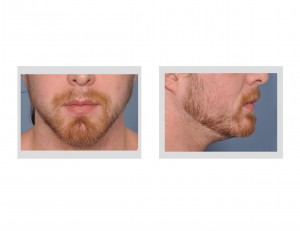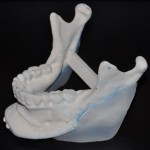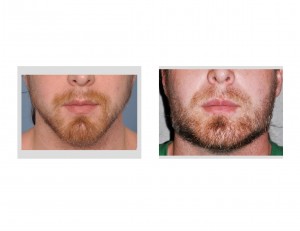Background:The desire for a stronger jaw appearance is sought by many younger men. Part of a strong jawline is the size and angularity of the jaw angle. Located under the masseter chewing muscles, the right or left angle of the back part of the jaw is one of the largest areas of the lower jaw. Unlike the chin, the jaw angle is not a profile structure of the face and is most evident in the frontal and oblique views.
A well defined jaw angle has visible vertical and horizontal edges, some degree of outward flare, and sits above the level of the lower edge of the chin. This allows the profile of the jawline to be seen to angle back and outward from the frontal view, creating a V-shaped configuration. There is no aesthetic consensus on how much flare is best or the vertical relationship of the angle to the chin.
Implants are the only plastic surgery option for creating increasing the prominence of the jaw angle. There are no osteotomy or bone moving procedures that can enhance its shape. Jaw angle implants come in two basic styles, one for lateral augmentation (pushing out the existing bone shape) and inferolateral augmentation. (creating a lower and wider jaw angle partially below its existing shape) Selection of the proper implant style for the patient’s anatomy is critical to get an improved jaw angle definition result
Some men, however, desire a jaw angle change that simply can not be obtained with current implant styles. Or have had prior jaw angle implant surgery, and while finding it provided some improvement, was not satisfied with the result. In these cases, only custom jaw angle implants will suffice.




Case Highlights:
1) Prominent jaw angles are a desired feature for many men to create a more angular and visible jaw line. Jaw angle implants are the only surgical method available to augment this part of the lower jaw.
2) Current off-the-shelf styles of jaw angle implants may not create a strong enough change for some men. For these patients, custom jaw angle implants may need to be made.
3) Made off of a jaw model from a 3-D CT scan, custom jaw angles implants are manufactured from a silicone material. They can be made with any desired height and width and can make a dramatic change in the angle of the jaw’s appearance.
Dr. Barry Eppley
Indianapolis, Indiana



